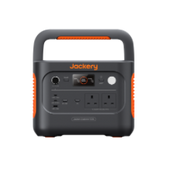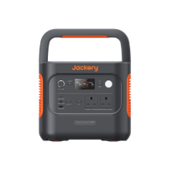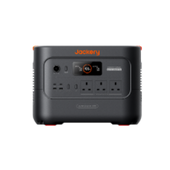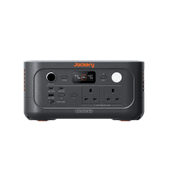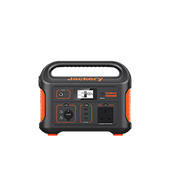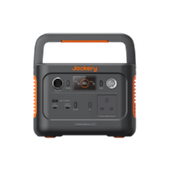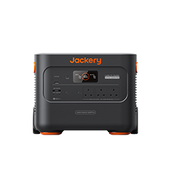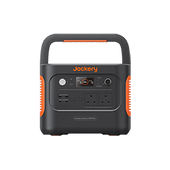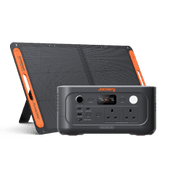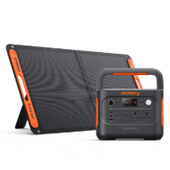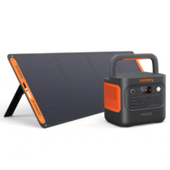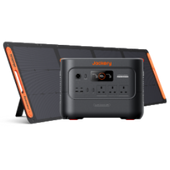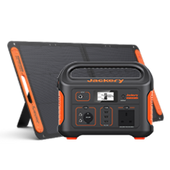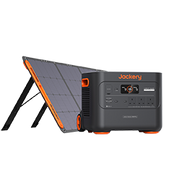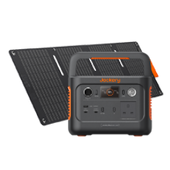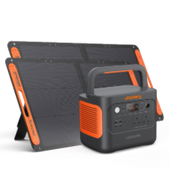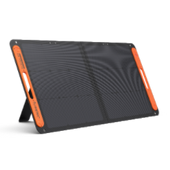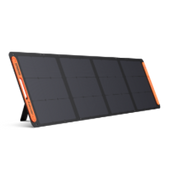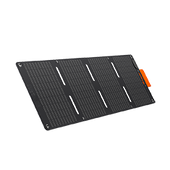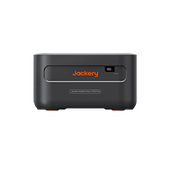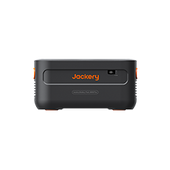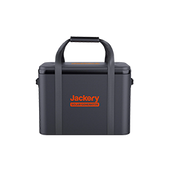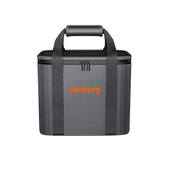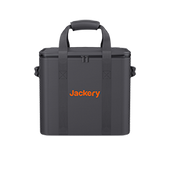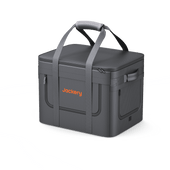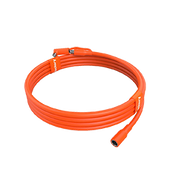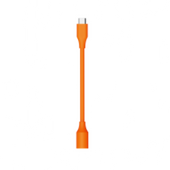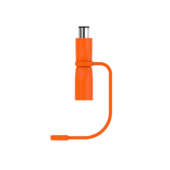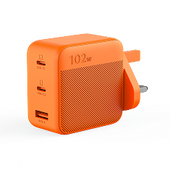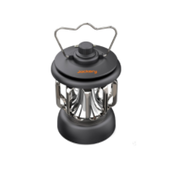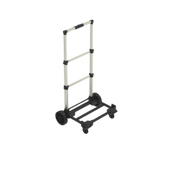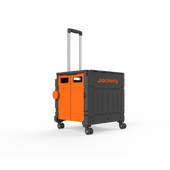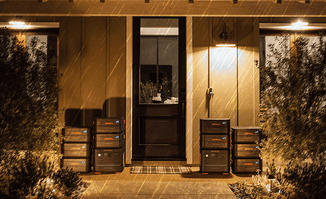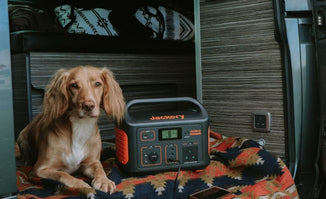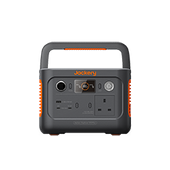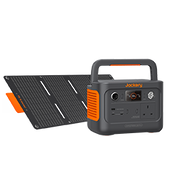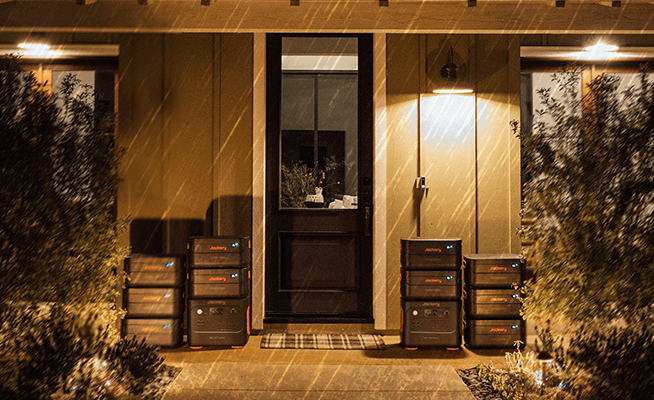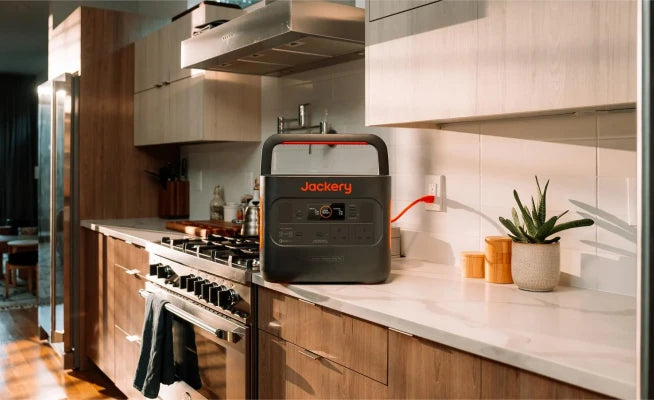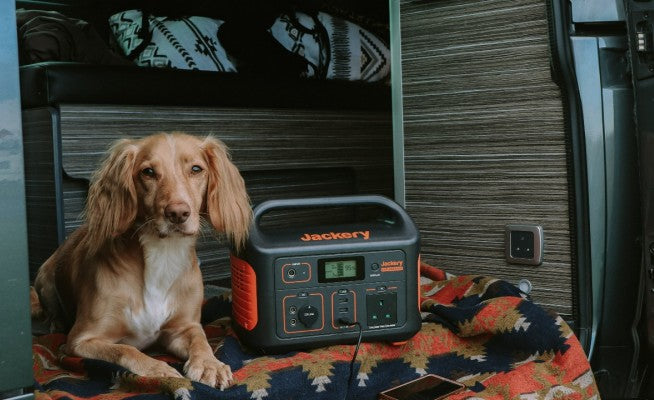What to Consider in Buying Portable Power Stations for Camping Life
Over the past few years, camping has become a popular outdoor adventure, urging many among us to pause the hectic pace of modern life and recharge our spirits. Some go camping in the Lake District National Park as occasional weekend trips, while others embrace a long-term camping lifestyle. In both cases, campers need a reliable power source to power their essential devices and appliances. This is where the portable power station comes to the rescue by providing an endless power source, even in the most remote locations.

Portable power stations are power banks for camping, equipped with rechargeable batteries and multiple outlets necessary to charge/power laptops, tablets, smartphones, or other camping accessories. Moreover, the lightweight and portable design, along with durable solar panels, make portable power stations the ideal companion for campers to explore remote areas without compromising on convenience and comfort.
Therefore, the most important thing to consider is picking the best portable power station that is efficient and reliable for camping life. Therefore, this article explores all the key factors to consider in buying a portable generator for camping. So, let's keep things rolling!
Benefits of Portable Power Stations for Camping Life
Before we begin listing the things to consider in purchasing a portable power station, it's important to understand what benefits it can offer for camping life. Below are the four key benefits campers can get with portable stations:
- Continuous Access to Electricity with Multiple Recharging Methods
Portable power stations come with rechargeable batteries instead of relying on fossil fuels. Once a battery is charged, it can provide continuous access to electricity. For instance, once a 500W portable station is full, it can charge a smartphone (iPhone 14) 29 times.
Once the battery is discharged, it can be recharged in multiple ways. If sunlight is available, the battery can be recharged using solar panels. This allows campers to harness solar energy and easily recharge the battery in an eco-friendly way. Besides, the portable power station is also chargeable via AC wall outlets or a 12V DC car adapter, making it durable when camping.
- Multiple Outlets for Simultaneous Charging of Multiple Devices
Portable power stations offer multiple power outputs for powering various devices. They include AC outlets, DC ports, and USB ports. This makes it easy for campers to charge or power their devices, such as smartphones, laptops, cameras, mini-fridges, air conditioners, etc.
Moreover, the multiple outlets also support simultaneous charging, which means you can power multiple devices at the same time.
- Portable and Lightweight
Another key aspect of portable power stations that makes camping life easy is their portability and lightweight design. They are designed in a way that they are compact, lightweight, and easy to carry anywhere.
So, whether campers are going hiking on a remote site or setting up a basecamp, the compact and portable nature of portable power stations ensures that they don't take up much space.
- Noise-Free and Eco-Friendly Operation
One of the standout qualities of portable power stations is their noise-free and eco-friendly operations. Unlike gas generators that produce loud noises and harmful greenhouse gases, portable power stations operate silently without emitting any fumes or greenhouse gases. This ensures that campers can have a peaceful camping experience and immerse themselves in the peacefulness of nature.
Things to Consider in Buying Portable Power Stations for Camping Life
With the growing popularity of camping and outdoor adventures, the portable power station is also witnessing a boom. Today there are hundreds of portable generators to choose from. So, we must know what key things to consider while buying a portable camping generator. Therefore, below are six things to consider to pick the best and most reliable portable power station:
- Battery Capacity
The first and most important thing to consider is the battery capacity of the portable power station. The battery capacity reflects how much power the station can store and deliver. For that, it is important to clear the relationship between mAh, Ah, and voltage and then measure the battery's watt-hours (Wh) capacity.
mAh represents the total amount of electrical charge the battery can hold over time. Ah represents the ability of the battery to deliver a current for a specified duration. Voltage represents the potential difference between two points.
Mostly the battery capacity is represented in watt-hours (Wh), which is calculated by multiplying the battery voltage by its ampere-hour (Ah) rating. So, if a battery has a voltage of 12V and an ampere-hour rating of 100Ah, its capacity is 1200Wh.
Besides understanding fundamentals, you should also know what Wh really means. Wh represents how many hours the battery will last. For instance, a 512Wh capacity battery can run a 45W mini fridge for almost 11 hours. This way, finalize the portable power station's camping battery that aligns with your power needs.

- Battery Technology
Other than battery capacity, the next important thing to consider is battery technology. The battery type/technology has an impact on the long-term performance of the portable power station. Most batteries in portable stations use either Lithium-Ion (Li-Ion) or Lithium Polymer (Li-Po) technology. However, both technologies have their pros and cons.
The lithium-ion batteries are high-energy density and low-weight batteries. They offer a longer lifespan, which means more charging cycles before the battery performance begins to degrade. They are also cost-friendly compared to lithium-polymer batteries.
The lithium-polymer batteries are more lightweight, flexible, and robust, especially regarding their size and shape. They have a considerably low passive discharge rate, resulting in longer charge preservation when not in use. However, they have less lifespan than lithium-ion batteries and are more costly. In addition, they have less energy density than lithium-ion, meaning they will have less run time.
In short, both Li-Ion and Li-Po batteries are reliable technologies with slightly different characteristics. So, the battery technology you should target in the portable power station depends on factors like energy density, weight, run time, standby time, etc.
- Inverter
Portable power stations come integrated with an inverter that converts the battery's DC power into AC power for powering AC appliances. Therefore, it is also vital to look into the characteristics of the inverter while choosing the portable station.
The first thing to look at is the inverter's output power, as it reflects what max wattage it can provide to appliances. So, look into the power requirements of the AC appliances you want to connect with the portable station and finalize the inverter output power you need. Besides that, the best inverter should also provide pure sine wave output for the smooth running of connected electronics.
- Peak and Continuous Wattage
The power rating of the portable power station is also an important element to consider. For that, it is essential to understand the peak wattage and continuous wattage.
Peak wattage, or surge wattage, is a short-duration maximum power output that the portable station can deliver. It is often required by devices that need high initial power to start, such as refrigerators, air conditioners, etc.
Continuous Wattage is a long-duration steady supply of power by the power station. It reflects the maximum load the portable station can handle without overheating. Laptops, lights, TC, and other similar electronics need continuous wattage.
In short, you must ensure that the portable station you pick offers the peak and continuous wattage required by the appliances you want to use. For example, a portable power station with a 1000W (2000W surge peak power) rating means that it can offer continuous wattage of 1000W and peak wattage of 2000W.
- Input and Output
The number of input and output ports also matters. For campers, look for a portable power station that provides three input ports. First, it should be chargeable through the traditional AC wall outlet. Second, it should have a solar input port to charge the battery through solar panels. Lastly, the car charging input port for charging the power station should be able to connect the car's DC power outlet while on the go.
Similarly, a portable power station should also provide multiple output ports, such as AC outlets, USB-A ports, USB-C ports, and DC outlets. This helps to easily charge or power various appliances while camping, such as smartphones, cameras, speakers, mini-fridge, lights, etc.
- Other Features
Other than the above elements, there are many other features to consider while purchasing portable banks for camping. Some of those features to look into include:
- Cost:Evaluate the cost vs. functionality of different portable power stations and shortlist the ones that match your budget and feature requirements.
- Weight:Look for the portable power station weight, as you need a lightweight and portable station that you can easily carry during your camping trips.
- Number of Ports: Look into the number of AC, DC, and USB ports the portable power station offers. Having multiple ports is vital to charge or power multiple devices simultaneously.
- Safety Features:Take into account what safety features the portable power station incorporates, such as battery management system (BMS), temperature control, short-circuit protection, overload protection, etc.
With all the above features and even more depending on specific preferences, campers can create a checklist and then shortlist a few best portable power stations that meet their requirements.
Best Portable Power Stations for Camping Life that Ticks All the Checkboxes
By considering all the above factors, campers can find the best, feature-rich, and reliable power banks for camping. However, to further ease this hassle, we have found two portable power stations that tick all the above requirements and serve as the ultimate power companions for camping life.
Jackery Solar Generator 1000 Pro
Jackery Solar Generator 1000 Pro is a powerful camping power station that provides 1000W (2000W surge peak power) for charging/powering all essential appliances. It comes with a SolarSaga 80W/100W/200W solar panel to charge the power station using solar energy in remote areas. In fact, its 1,002Wh capacity battery is fully-chargeable in just 1.8 hours with 4 SolarSaga 200W solar panels.

Below are the key features of Jackery Solar Generator 1000 Pro that highlight its exceptional performance and reliability in camping life:
- Multiple charging methods, solar, AC, and car DC port
- Multiple output ports, AC, USB-A, USB-C, and car
- Power multiple appliances simultaneously
- 46dB noise level for super-quiet operations
- Smart Screen display
- Ultra-long standby – 1000 charge cycles and lasts 368 days from 80% battery level
- Advanced heat dissipation design
- Made up of 94V-0 fire rating materials
- Vehicle-grade Battery Management System (BMS)
- 3+2 years warranty
In short, the powerful 1000W output in a compact design with multiple output ports and safety features makes Jackery Solar Generator 1000 Pro the complete portable generator for fulfilling all the essential power needs while camping.
Jackery Solar Generator 2000 Pro
Jackery Solar Generator 2000 Pro is a more powerful portable generator for camping, best suited for long-duration camping or RV living. It features a huge 2,160Wh capacity battery with a power rating of 2200W (4400W surge peak power) that can power almost all camping appliances, including air conditioners, electric heaters, hot plates, etc.

What makes Jackery Solar Generator 2000 Pro exceptional is its ultimate fast charging time despite holding a huge battery. The 2,160Wh battery is chargeable in just 2 hours with an AC outlet or 2.5 hours with 6 SolarSaga 200W solar panels. Moreover, it also showcases a compact physical design, making it easy to carry at any remote location.
Below are the key features of Jackery Solar Generator 2000 Pro worth knowing:
- Multiple charging methods, solar, AC, and car DC port
- First-rate lithium battery for long-lasting battery performance
- Multiple output ports, AC, USB-A, USB-C, and car
- Powers 7 devices simultaneously
- Advanced smart screen for all real-time performance information
- No shaking and super quiet operations
- Built-in Battery Management System (BMS) for short circuit protection, temperature control, voltage control, and other safety operations
- 3+2 years warranty
In short, Jackery Solar Generator 2000 Pro is an all-in-one portable camping generator that can efficiently fulfill all small to significant power needs.
Conclusion
With the growing number of smart appliances, a reliable power supply is a must when camping where the grid supply is unavailable. That's why portable power stations have emerged as the best power solution for camping life. However, choosing a feature-rich and reliable portable generator is equally important for the best camping experience.
After reading this article, you have two options. You can either consider the above factors and shortlist a few best portable stations, or use one of Jackery's power generators, as it offers the perfect blend of performance and features that campers need. It is even reflected in Jackery's global recognition as the leading brand for portable power generators. So, do check out the Jackery product line and see if you find something that ticks all your checkboxes.



